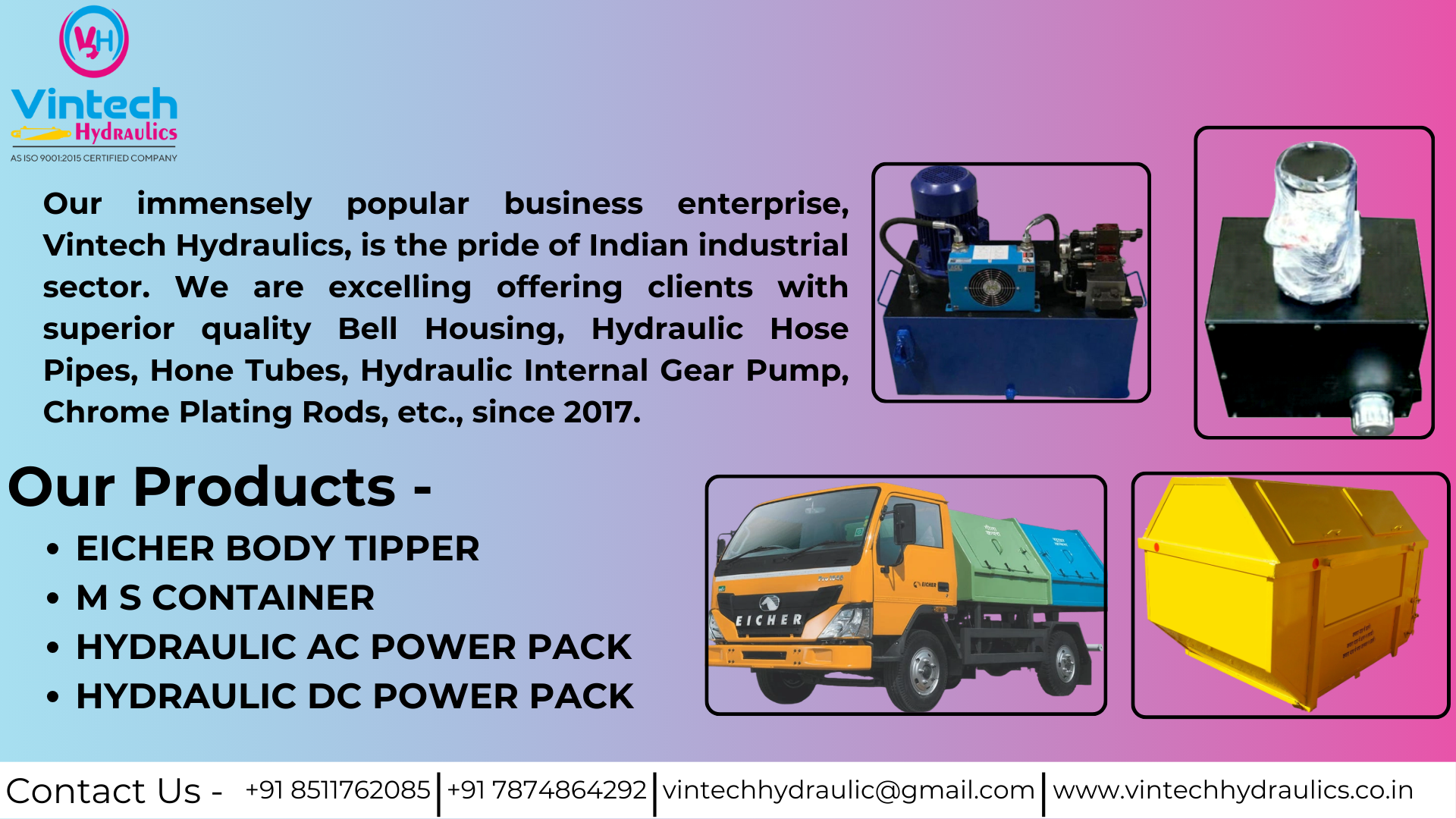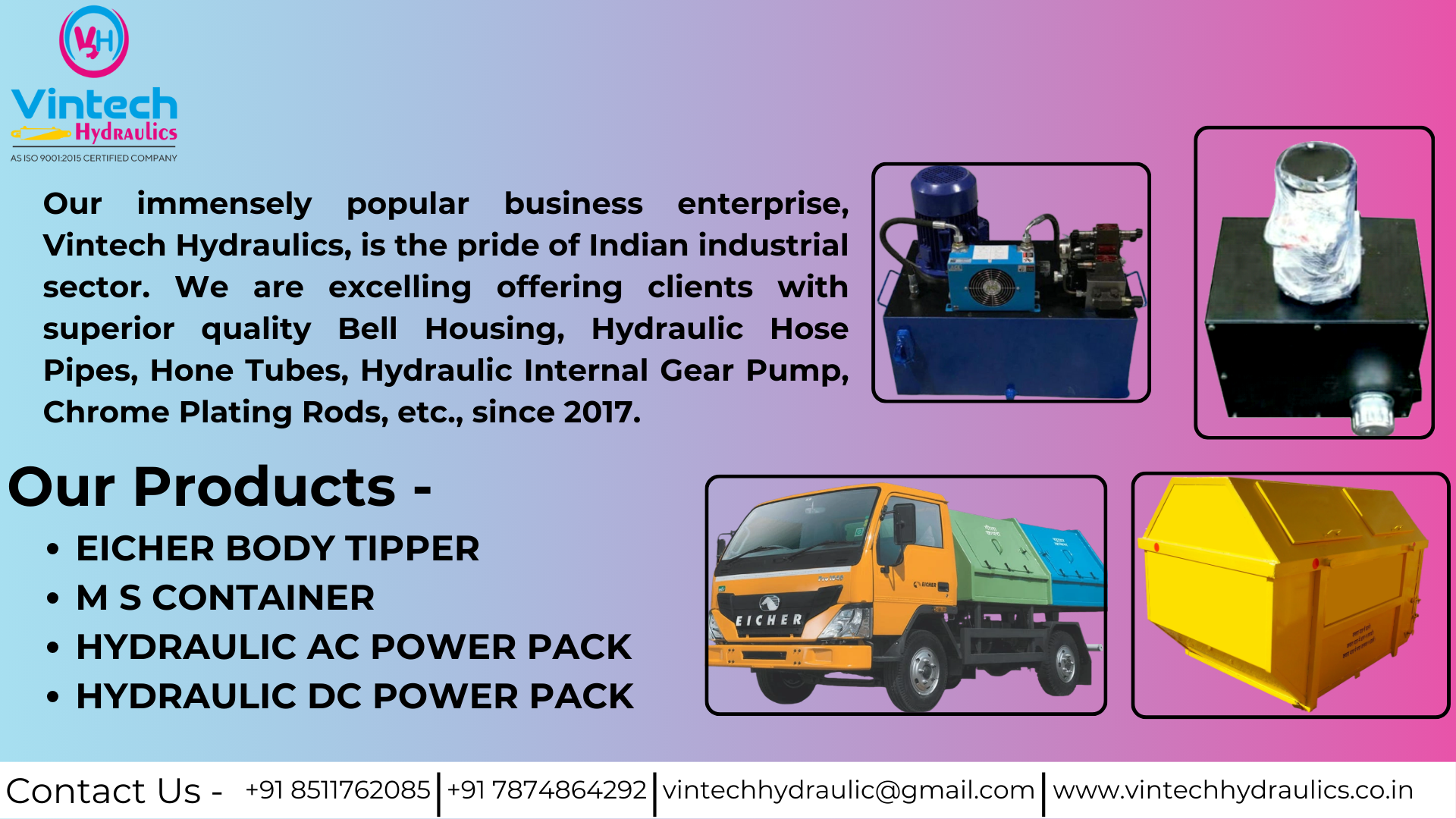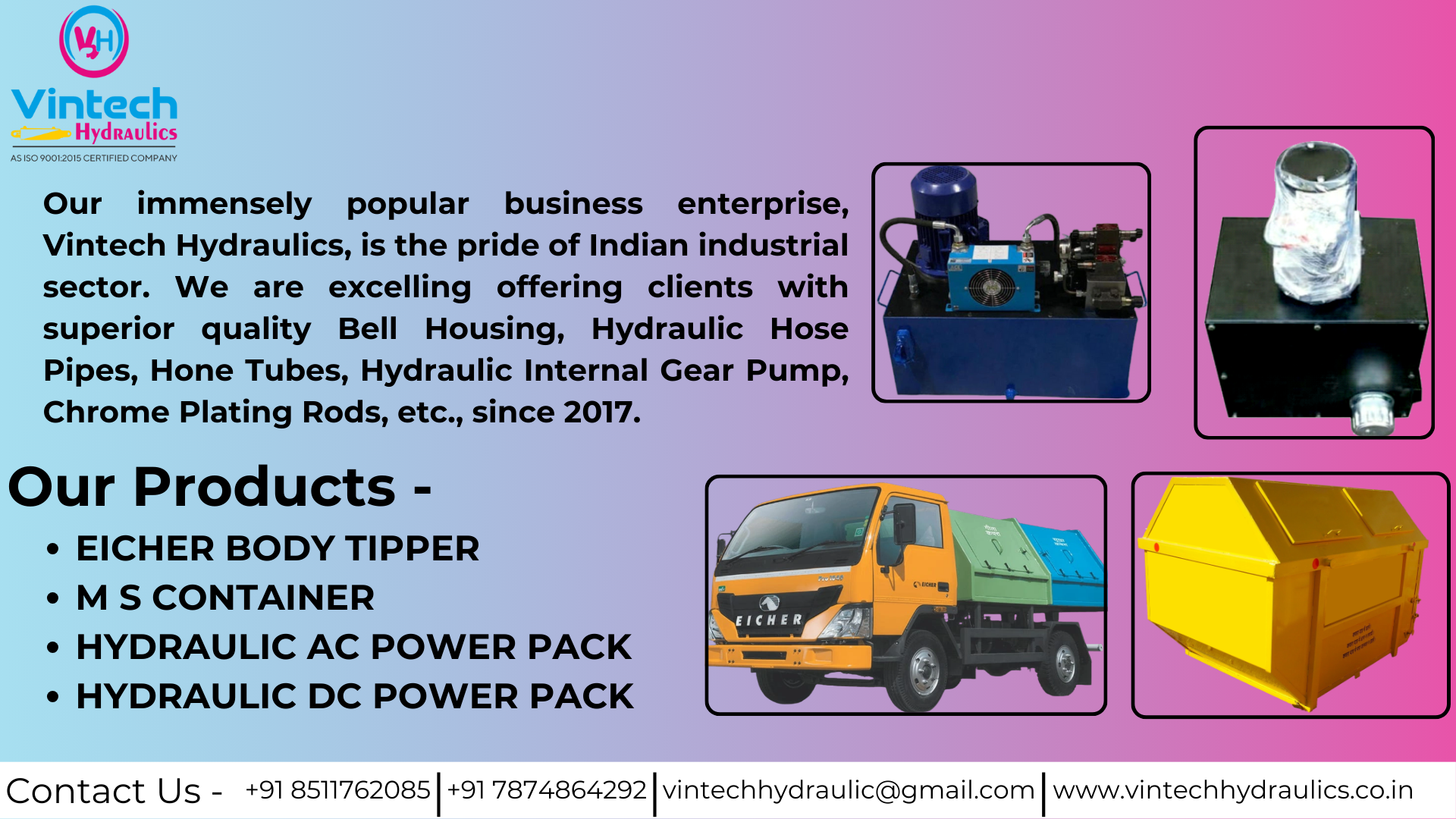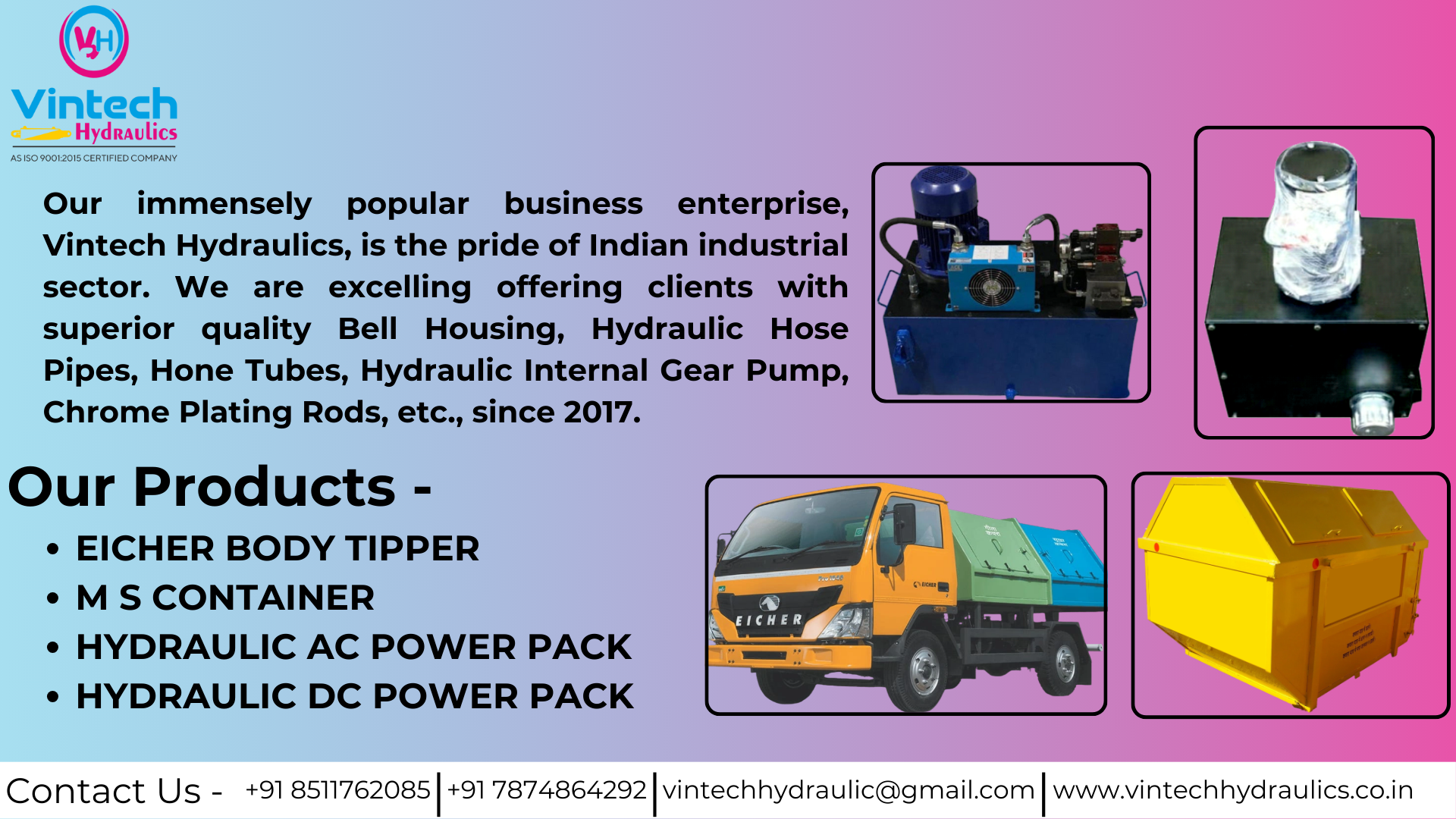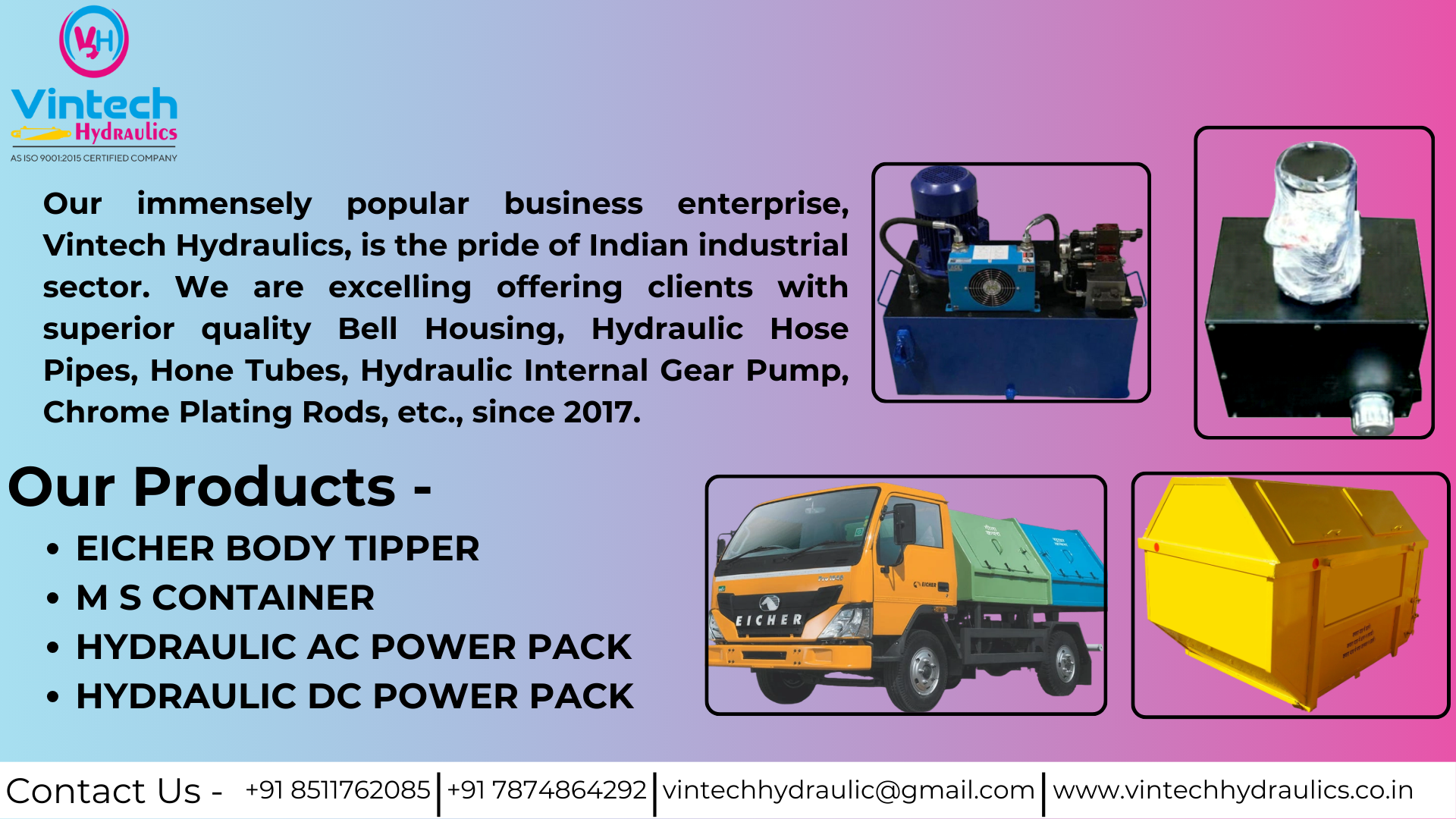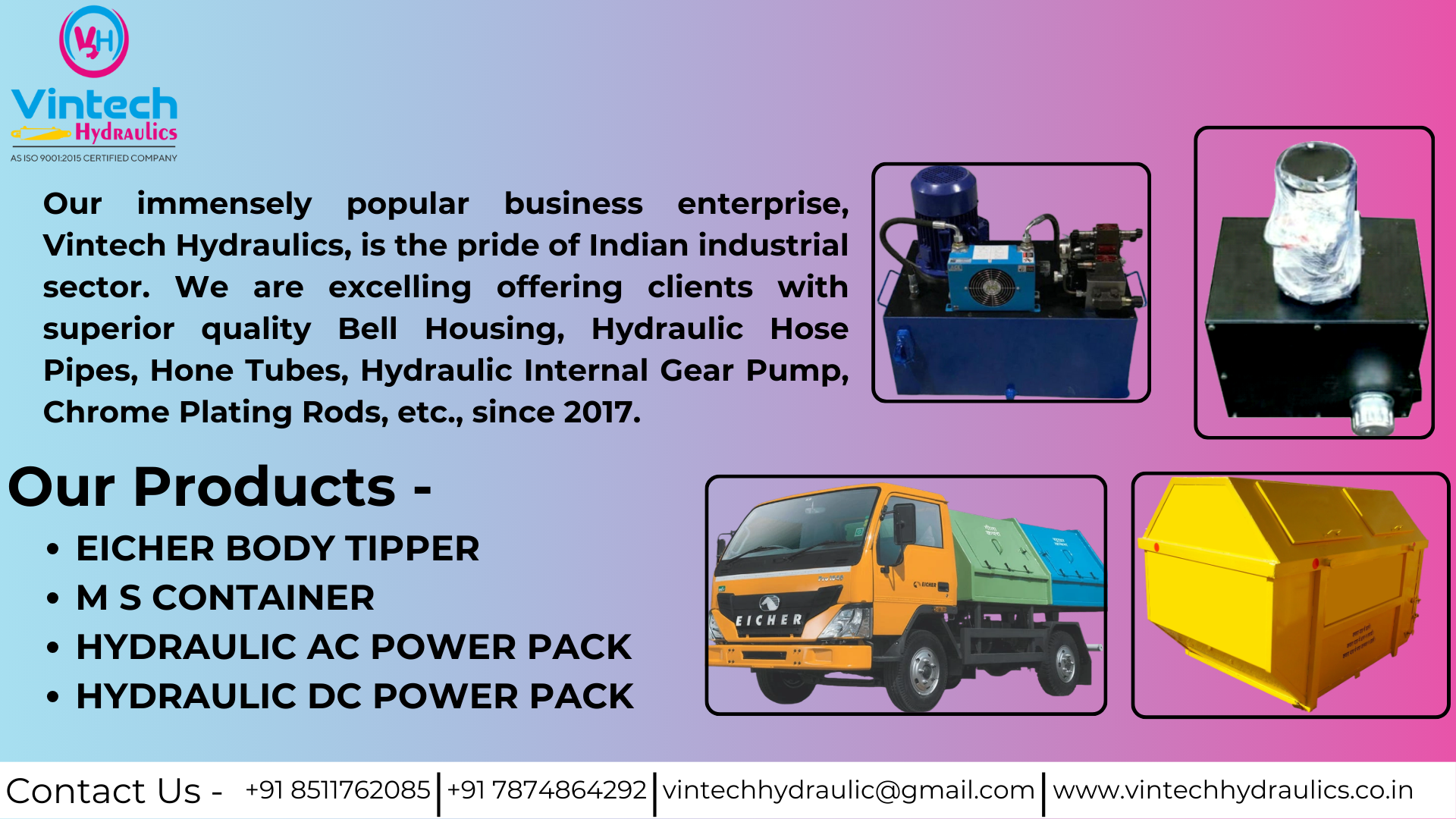
Hydraulic Cylinder Working Principle
Hydraulic Cylinder Working Principle
A hydraulic cylinder, also known as a linear hydraulic motor, is a mechanical actuator that converts the hydraulic energy of a pressurized fluid into a linear force and motion. This fundamental principle is based on Pascal's Law, which states that pressure exerted anywhere in a confined incompressible fluid is transmitted equally in all directions throughout the fluid. This ability to generate immense, controlled force makes them indispensable in a wide array of heavy-duty applications across construction, manufacturing, and agriculture in India. Learn more about their applications and design at Vintech Hydraulics.
The core of a hydraulic cylinder's operation involves a few key components. Pressurized fluid (usually hydraulic oil) from a pump is directed into the cylinder barrel by a control valve. This fluid acts on a piston, creating a force that pushes the piston along the bore. This push-pull action is what generates the linear motion. In a double-acting cylinder, fluid can be directed to either side of the piston (piston side or rod side) to extend or retract the rod, providing force in both directions. The force produced is directly proportional to the fluid pressure and the effective surface area of the piston. Efficient sealing prevents fluid leakage and contamination, ensuring reliable performance and extended service life.
- Cylinder Barrel: The main body of the cylinder, a precision-honed tube that houses the piston and contains the fluid pressure.
- Piston and Piston Rod: The piston is the pressure-activated component inside the barrel, while the piston rod is the component that extends and retracts to provide linear motion.
- Cylinder Head & Cap: The end caps that seal the barrel, with the head end having an opening for the piston rod to pass through.
- Seals & Wipers: High-performance seals prevent internal and external fluid leakage, while wipers clean the piston rod surface to prevent contaminants from entering the cylinder.
- Mounting: Various types of mounts (e.g., clevis, trunnion, flange) are used to attach the cylinder to the machinery it will operate.
- Pressure and Force: The force generated is calculated by the formula $F = P \times A$, where F is force, P is pressure, and A is the piston's surface area.
- Velocity: The speed of the piston's movement is determined by the fluid flow rate and the piston area.
- Cushioning: Cylinders often include cushioning mechanisms at the end of the stroke to decelerate the piston, preventing shock and noise and protecting the cylinder's structure.
- Efficiency: High efficiency in converting hydraulic power to mechanical work, with minimal energy loss.
- Durability: Rugged construction with precision-machined components ensures a long operational life, even in harsh working environments like those found in construction and mining.
- Construction Equipment: Earthmovers, excavators, loaders, and cranes use hydraulic cylinders to lift, dig, and move heavy loads with immense force and control.
- Manufacturing and Industrial Machinery: Presses, molding machines, and clamping systems rely on the precise and powerful linear motion of hydraulic cylinders for forming, stamping, and assembling parts.
- Agriculture:Tractors and other farm machinery utilize cylinders for steering, lifting implements, and operating attachments like loaders and tillers.
- Waste Management: Refuse compactors and baling machines employ large hydraulic cylinders to compress materials efficiently.
- High-Force Output: The ability to generate and sustain extremely high forces in a compact size, making them ideal for heavy-duty applications.
- Precise Control: Precise speed and force control through flow and pressure regulation, allowing for highly accurate and repeatable movements.
- Simple Design: The fundamental design is relatively simple and robust, leading to high reliability and ease of maintenance.
- Safety and Reliability: Hydraulic systems are inherently safe, and with proper maintenance, they provide reliable, long-term performance.
At Vintech Hydraulics, our expertise lies in leveraging the fundamental working principles of hydraulic cylinders to design and manufacture highly efficient and durable products. We focus on precision engineering, using high-quality materials and advanced sealing technologies to ensure maximum performance and longevity. Our cylinders are custom-engineered to meet specific application requirements, providing optimal force, speed, and reliability for India's demanding industrial landscape. We are committed to delivering products that not only perform but also offer a low total cost of ownership through simplified maintenance and a robust, repairable design.
Tips for Maintaining Hydraulic Cylinder Performance
- Regularly check for fluid leaks, as they indicate seal wear and pressure loss.
- Maintain fluid cleanliness by using recommended filters and checking the oil level.
- Inspect for rod scoring or pitting, which can damage seals and compromise performance.
- Ensure proper alignment and mounting to prevent side-loading, a common cause of premature failure.
- Always follow manufacturer's specifications for pressure and fluid type.
FAQs – Hydraulic Cylinder Working Principle
Contact Details
Talk to our specialists today for tailored solutions and fast assistance.
